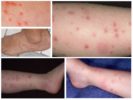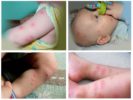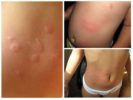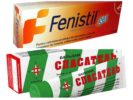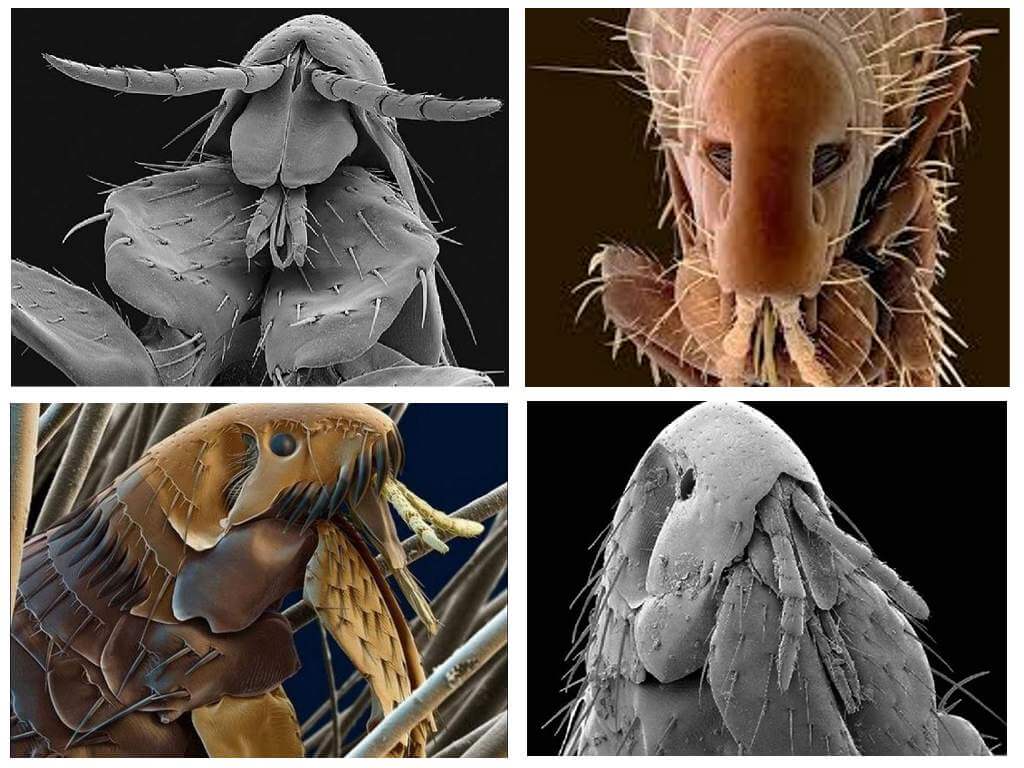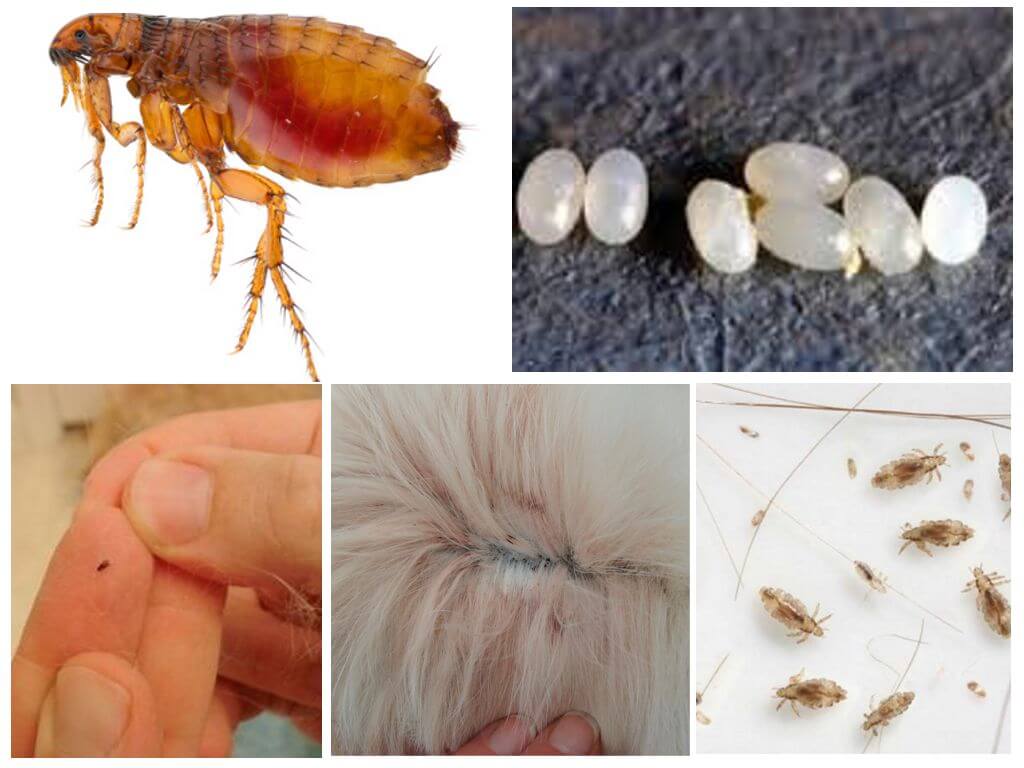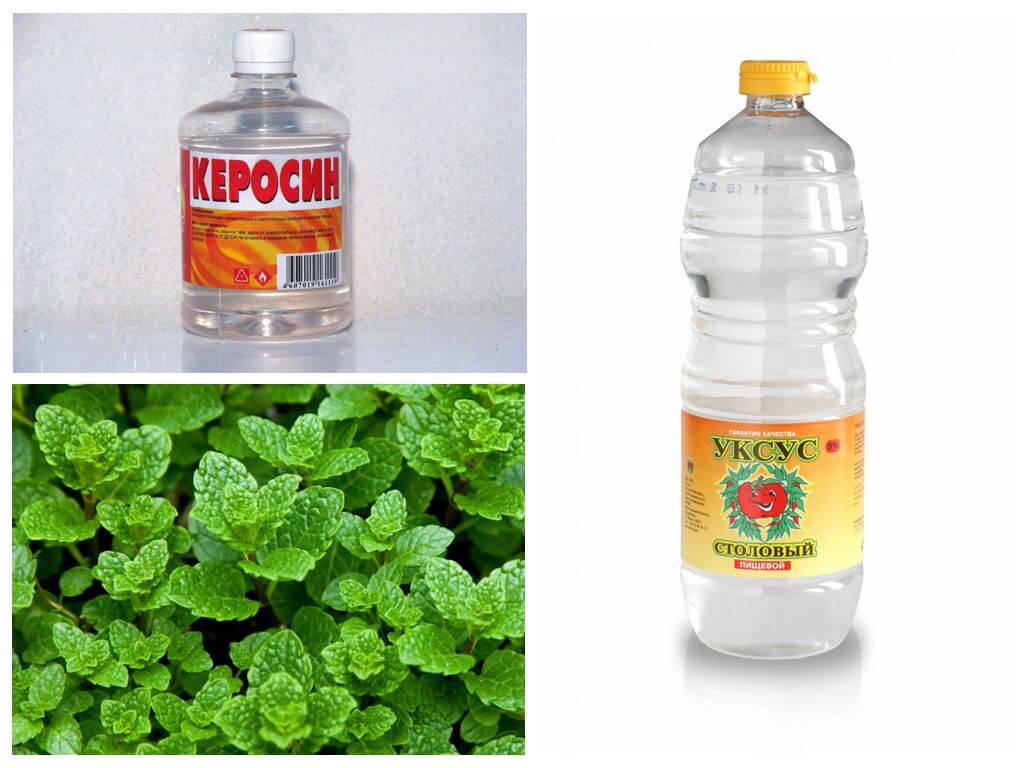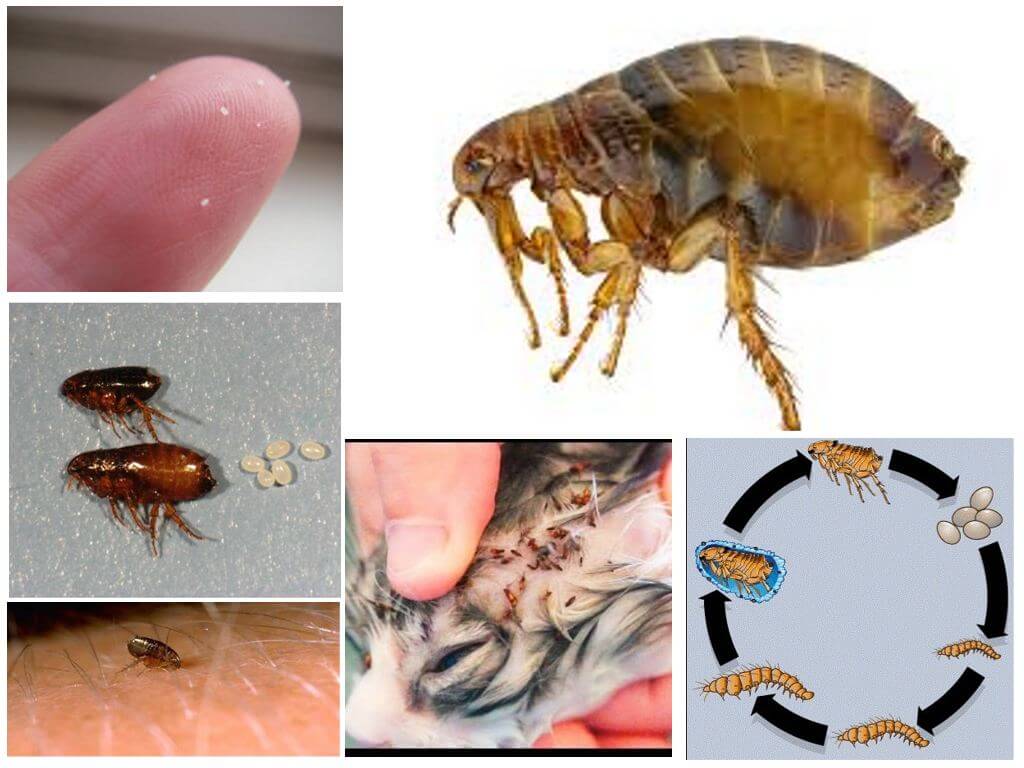- Flea bites
- Flea bites in a child
- Flea bite allergy
- Ointments for bites
Fleas belong to blood-sucking parasites. Due to the specifics of penetration into the wound, parasite bites very painful and provoke the appearance of allergic reactions. This is especially acute in children who exacerbate the problem by combing, which leads to secondary infection. The flea bites in children in the photo will help identify the culprit and take the right treatment.
What do flea bites look like?
A flea bite in a child has more pronounced signs than in adults. A strongly swollen red blister with a diameter of up to 20 mm with subcutaneous hemorrhage appears at the site of the lesion. Flea bites in a child are most often accompanied by itching. Even an adult is not able to resist the temptation to scratch the wound, and what can we say about children who begin to violently tear the affected skin. The consequences of a flea bite make themselves felt for 3-5 days.

You can distinguish that fleas bite, and not other bloodsuckers, by the following signs:
- A flea bite on a child is not single and is a chaotic cluster of short chains of 2-3 bites. Sometimes they are confused with bedbug bites, but the latter leave behind them linear tracks of 4-5 punctures and bloody spots remain on the sheet.
- At the time of bloodsucking, a person experiences severe pain, since there are no painkillers in the flea saliva. Due to its mobility and jumping ability, the insect does not need to mask its bites.
- Unlike mosquitoesthat emit a characteristic squeak, fleas are silent creatures.
The photo clearly shows how flea bites look in children. Immediately after an insect attack, they are red spots with a puncture point in the center. After a few hours, seals form under them and in the center of the wound an abscess-like papule may form. In children, fleas cause a rash, which in appearance is very similar to urticaria. Any open areas of the body can bite parasites: legs, back, face, arms, stomach.
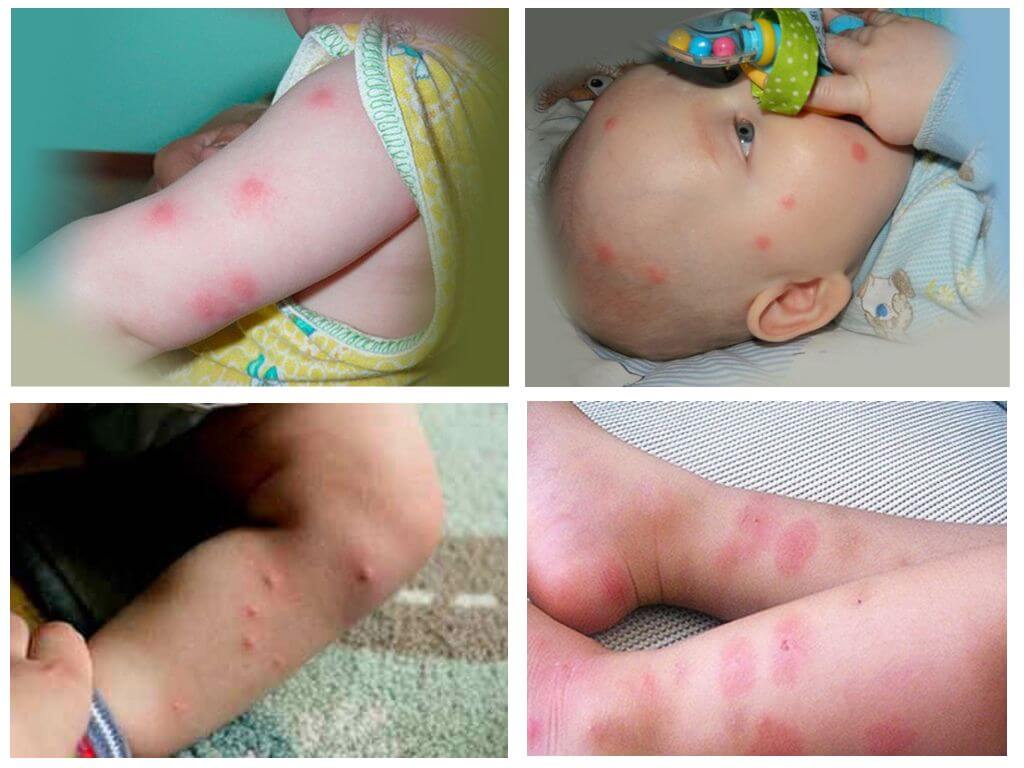
The consequences of flea attacks
If a child is bitten by fleas, in addition to characteristic skin lesions, other symptoms may appear:
- elevated body temperature 37-38 ° C;
- stool disorders, which are manifested by frequent diarrhea;
- inflammation of the lymph nodes;
- irritability;
- in rare cases, anaphylactic shock is possible.
Itching and pain after being bitten by bloodsuckers disappear after 3-5 days. With the above symptoms, self-medication is contraindicated. Only an allergist, dermatologist or pediatrician based on the condition of the child is able to prescribe adequate therapy.
An allergy to flea bites in a child is due to a number of reasons:
- the parasite injects with its saliva an enzyme that prevents blood clotting, the substance contains proteins that provoke the development of allergic reactions;
- the child’s immune system is still weak enough to resist and repulse negative external factors;
- delicate skin.
Important!
Painful sensations, itching, the manifestation of allergic reactions - these are not all the negative consequences of parasite attacks.When combing, the child can bring bacteria into the wound and aggravate the situation with infection. In addition, parasites are intermediate carriers of helminth eggs, carriers of several tens of dangerous diseases, including plague, typhoid, hepatitis. Therefore, for children, fleas represent serious danger.
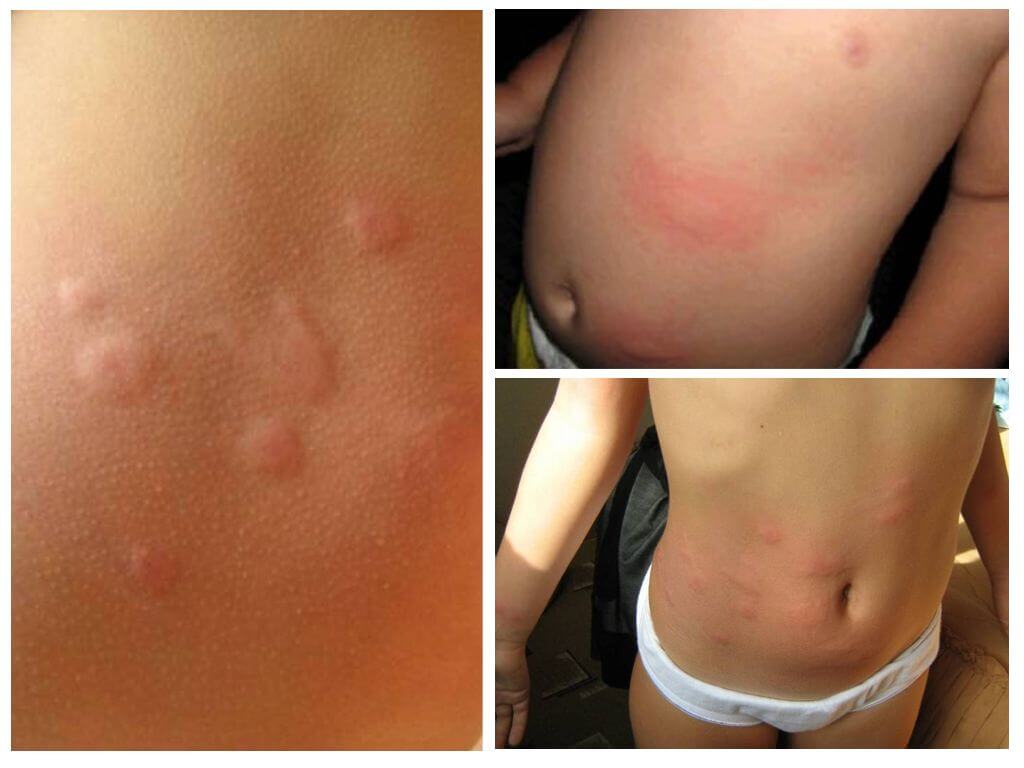
How to treat flea bites
What to do if a child is bitten by a flea - this is the first question asked by the parents of a bitten baby. First of all, you should calm down and stop panicking. A further algorithm of actions is as follows:
- Wash the wounds with water and antibacterial soap. It is important to remember that warm and hot water intensifies itching, so it is better to use cold water or room temperature for processing.
- Disinfect the wounds with hydrogen peroxide, an alcohol solution, an antiseptic.
- Apply ice cubes to relieve itching.
- If the child is too small and cannot heed the requests of the parents not to comb the wounds, the affected areas should be treated with brilliant green, spread with a soothing ointment and bandage.
Methods of treating flea bites in children depend on the age, weight of the child, the characteristics of the body and the degree of damage to the skin. With the manifestation of severe allergic reactions, specialist assistance is indispensable. The doctor prescribes antihistamines, and in cases where skin infections and antibiotics develop in the wounds.
It is allowed to treat flea bites in a child at home in the absence of fever and severe allergic manifestations. Therapeutic measures are reduced to eliminating the itching and preventing the infection of the bite sites.
Feedback
After a night's sleep, my daughter began to have red blisters on her body. I thought it was chickenpox and called a pediatrician at home. The doctor examined and said that these fleas bite a child and prescribed drugs for allergies, and also advised to treat the wounds with a decoction of chamomile. I would never have thought that these insects could appear in the apartment, because we don’t have any pets and on the street I never allow my daughter to play with stray animals. The neighbor complained about her trouble and it turned out that the parasites bite not only us. Probably, with the advent of spring, they became more active and began to penetrate into apartments from the porches. I had to hurry treat all rooms with insecticides.
Anna Maslova, Novoshakhtinsk

How to smear flea bites in a child depends on the individual susceptibility to the components of the ointment. Pharmacies have a wide selection of drugs to relieve symptoms after attacks of parasites: Fenistil, Rescuer, Boro-plus. Along with this, you can use folk remedies:
- grate potatoes and apply gruel or blot with cotton swab dipped in potato juice, the lesion;
- to relieve itching, make a compress of apple cider vinegar or soda solution;
- mix the juice of one lemon with 2 teaspoons of honey and 1 cup of boiled water, the mixture obtained smear the affected areas;
- infusions of herbs of plantain, dandelion, chamomile have anti-inflammatory properties and relieve itching, they treat bite sites with a cotton swab or make compresses of them.
How to protect children from attacks of bloodsucking insects
To protect your child from fleas, you should identify pathways of parasites and hold pest control of all rooms. If a pet lives in the house, the animal must also be treated. With the advent of spring, blood-sucking parasites often penetrate into the apartments of the first floors from the basements, therefore it is necessary to foresee the attacks of bloodsuckers in advance and take preventive measures. During walks, children should not be allowed to play with stray animals, so cat, dog fleas easily jump on people, which is fraught with further bites.
At that time, while the preparatory work for disinfestation is underway, you can smear the child so that they do not bite the fleas with a special baby cream that repels insects.
They actually proved their effectiveness, which is confirmed by the reviews left by people on the Internet.
